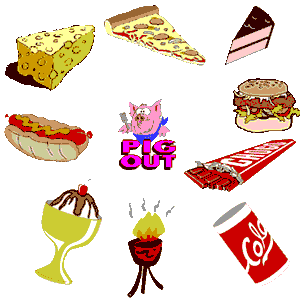Internet influence how our children think and act in a variety of ways. As
children grow these media influences become even more powerful. The media
influences on children is not always a good influence and parents need to
counteract this influence by discussing and monitoring what their children are
exposed to.
The media often stereotypes people and races. Most children's programming deals
in absolutes reinforcing the idea that people are good or bad, stupid or smart
and because of their inexperience children will latch onto stereotypes that
they see.
Parents can counteract this stereotyping by commenting when a group is
portrayed inaccurately. Let your children know for example that every blond
isn't stupid, and wearing black doesn't make you a bad guy. Point out that
everyone has good and bad traits.
So, often in the media a character is either good or bad, but in real life this
is not the case.
The media uses its influence on children to market items and influence your
child's desires making them think that they need certain items to be popular or
cool. My children often comment on things that they saw in commercials. The
other day my son told me that I should get a kitchen chopper, because it can
cut things up so much faster than I can using a knife. I replied that I don't
need a kitchen chopper because a knife works just fine.
Every year children influence their parents spending by convincing them to buy
things that the media has portrayed as "cool". Children recognize
name-brand products at an early age because they see them in the media. My
children recognized the McDonalds sign by age three even though we never eat
there, because they saw commercials on television.
Counteract the marketing by pointing out the faulty logic in commercials. Ask
your child if they really think having the latest toy will make them more
popular or happy. Children often don't realize that a Barbie won't move around
like it does on the commercials or that the elaborate set doesn't come with the
toy. Parents can teach their children that things do not equal happiness. Try
rewarding with praise and time instead of objects. My children know that they
don't get what they see on television and they rarely ask.
Life on many television shows and movies is far from normal. They often
glamorize potentially destructive behaviors like drinking, drugs, affairs, and
intimate teen relationships.
As a parent you can counteract the media's influence by pointing out how the
actions of the people on screen are potentially dangerous. Alcohol commercials
never show the hangovers the next day. Rarely does a teenage girl get pregnant
or someone contract a sexually transmitted disease in the media.
Research done by both RAND and the University of North Carolina also shows that
teenagers who are exposed to more sex talk and acts in the media are more
likely to engage in those same behaviors themselves. Dr. Brown, one of the
researchers says, "Teens are defaulting to entertainment media for sexual
information because they aren't getting this information in other places.
Unfortunately, the media aren't the best sex educators. The media tend to leave
out the crucial three C's: commitment, contraception and consequences."
The study on media influence on children also pointed out that parents could
have a greater impact on their teen's sexual behavior than the media when they
talk about it.
Taking the time to discuss the things that our children view in the media will
ensure that they are learning the things that we want them to and not the
lessons that the media might be teaching thus avoiding negative influence of
media.










